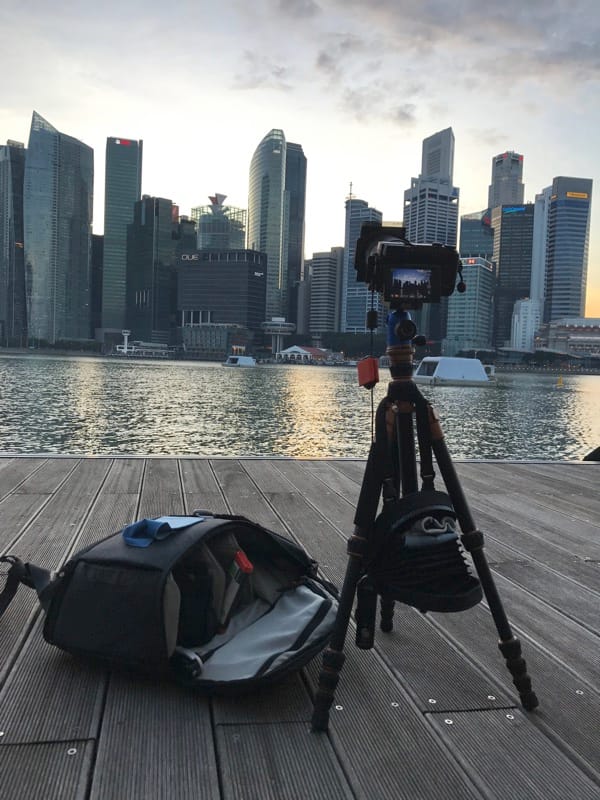My Mirrorless Experience

I made the switch from DSLR cameras to the Micro Four Thirds (m43) based interchangeable lens system in about 2014. My last dSLR was a Nikon D200, and I switched to the Panasonic Lumix DMC-GX7 that I am still using.1

The switch to m43 has been awesome.
My personal photography revolves around underwater, seascapes, landscapes and travel photography. For all of these genres a balanced and lightweight rig provides an a lot of advantages for me.
Advantages of m43
Travel is getting more restrictive, and there is a clear move by airlines and security agencies to increasingly limit the amount of gear we can travel with, particularly carry on. Many of the destinations I go to are accessed by small aircraft, placing even greater restrictions on the kit that can be carried.
In my photography, I tend to move around a lot, and the smaller rig allows me to more easily carry all my kit in one bag.
I can also use a smaller, lighter tripod to stabilise my rig – important in my photography.
The m43 gear also tends to be ahead of the curve, compared to most DSLR gear, in terms of introducing new tech.
This is not an exhaustive list, but some of the key things that work well for me.
Disadvantages and Mitigations of m43

Clearly the smaller sensor size (compared to the misnamed ‘full frame’ cameras) means lower resolution. My GX7 is 16 megapixel2, and to be honest I’ve never found a scenario where I have wished for more. For most photographers, anything upwards of 12 megapixel will be more than enough.
Autofocus on (most) mirrorless cameras is slower. If I were to be shooting high speed subjects (e.g. sports) this would be a concern. For my shooting, not so much.
Bokeh is more difficult on smaller sensors. I won’t go into the maths, but the depth-of-field is actually greater for the same f-stop, so you need a bigger aperture to achieve the same result3. To meet this requirement, some manufacturers are now making super fast lenses for m43 and other mirrorless cameras. One of my favourite lenses is the Panasonic Lumix G 20mm f/1.7, and there are at least a half dozen lenses with a maximum aperture in the order of 0.95.
Final Thoughts

The move to mirrorless has been the right move for me. I am glad I started down this path, and will stay the course with m43. If I was starting over I would happily choose m43 again, although would consider the Fuji mirrorless system.
I also find that I make more photos, more regularly, because I really have fun shooting mirrorless.
I am not advocating m43 (or other mirrorless) cameras as the perfect solution for all photographers, but for landscape, travel and underwater photographers there are many reasons mirrorless should be considered.
What is certain is that we are in an exciting time for photography when we can choose a wide range of cameras and accessories to make wonderful images.
- I am in the process of upgrading to the Panasonic Lumix DC-G9, but will keep my GX7 as a backup and second scene camera. ↩
- My upcoming G9 will be 20 megapixel. With some smart hardware/software magic 80 megapixel images can be made. ↩
- On the flip, the mirrorless depth-of-field is outstanding for my macro photographs. ↩